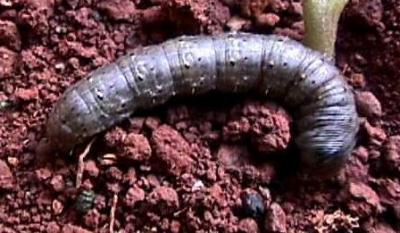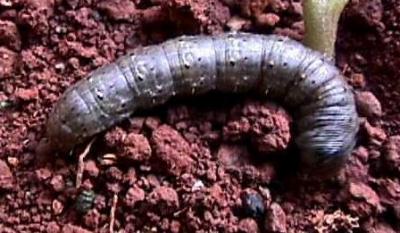

3.1.08 sr: notes ana: match the host plants list with the respective datasheets; although cutworms have many host plants, they are no major pests of all of them, therefore they have not been included in all datasheets of the above mentioned crops; s. by monitoring and decision making: pheromone traps are not available locally. economic threshold for which crop? where? under which conditions?;
Cutworms
Cutworms attack young seedlings. First instars are 7-12mm, fully grown caterpillars are 3.5-5 cm long. The caterpillar emerges from the soil at night, encircles the plant with its body and cut through the stem of young plants just above ground level. They may also damage the plants underground. Cutworm damage causes plants to wilt and die. Cutworm damage is usually minor and does not normally warrant control. However, in severe outbreaks a young crop may be destroyed.
- Monitor damage by counting damaged and freshly cut young plants. Monitor cutworm at dawn.
- Remove and destroy cutworms.
- Prepare field and remove weeds well ahead (10-14 days) of planting the crop in the field. Ploughing exposes caterpillars to predators and to desiccation by the sun. If the field is planted soon after land preparation, some cutworms may be alive and attack the new crop.
